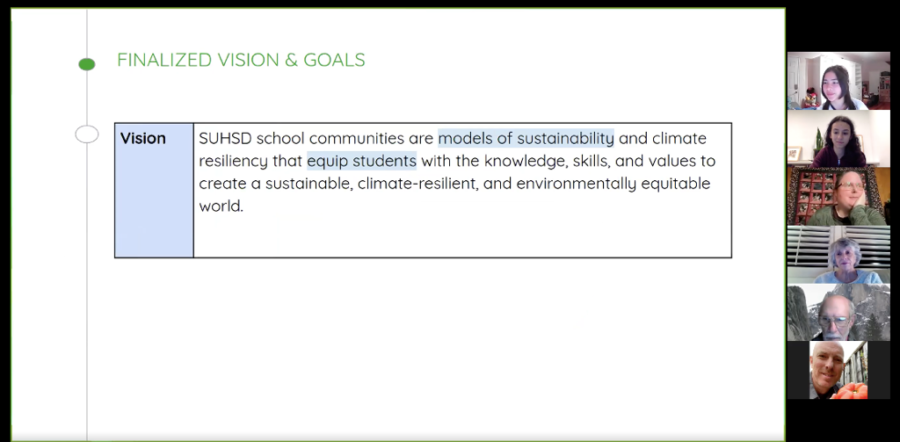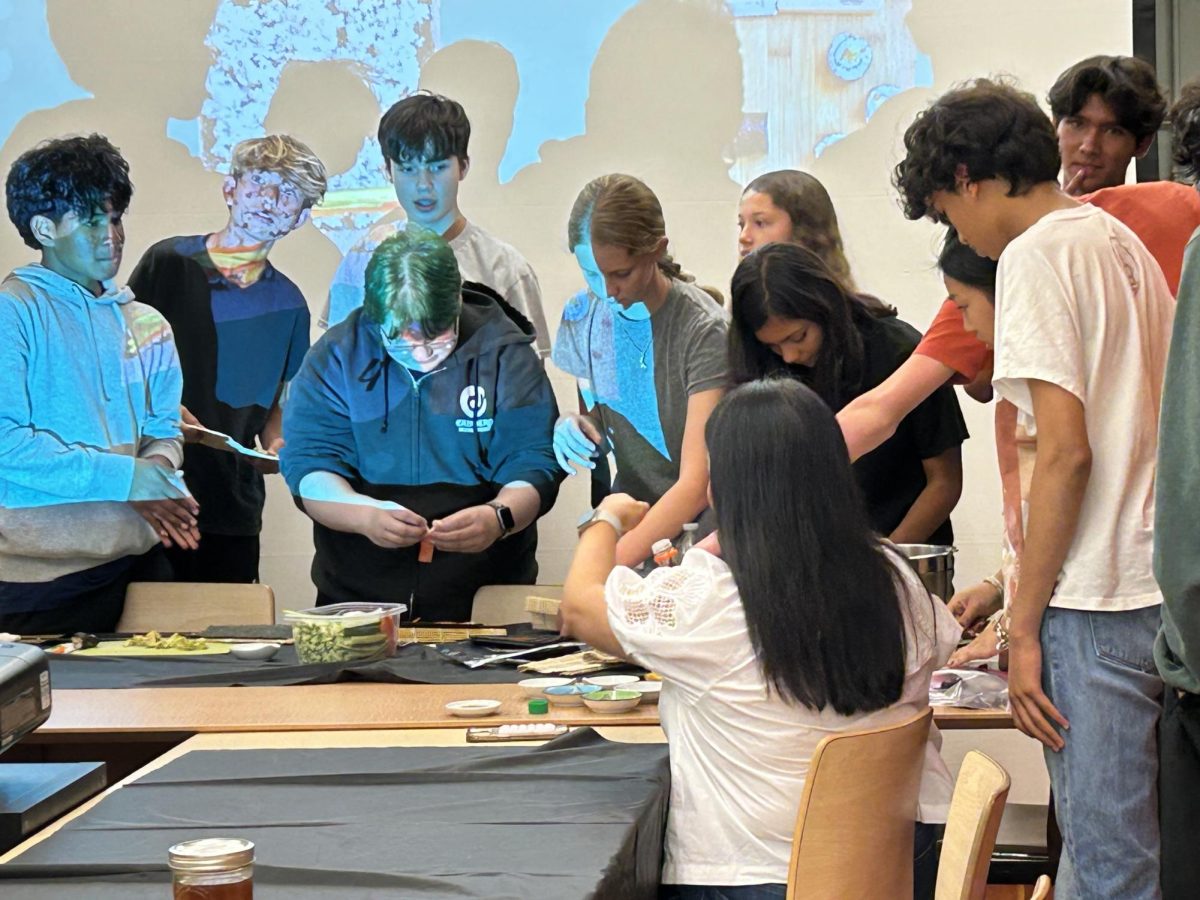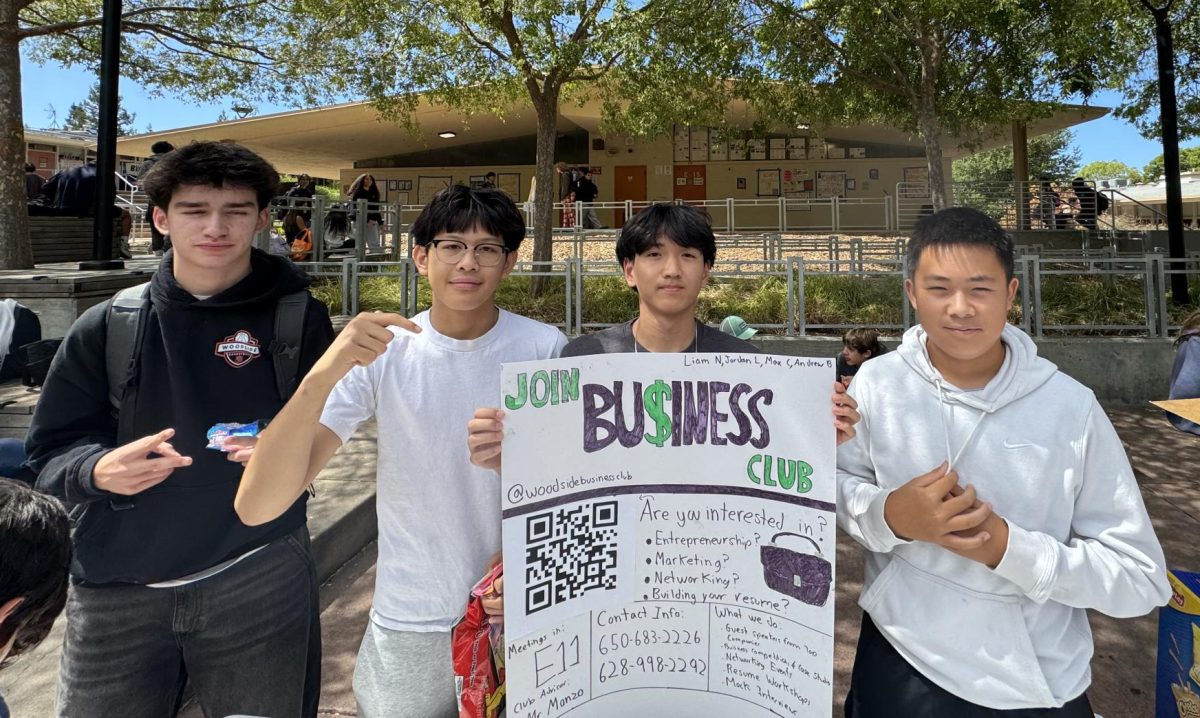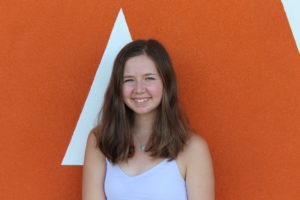After months of working towards more sustainability in the Sequoia Union High School District (SUHSD), a group of Student Stability Leaders from across the district created the SUHSD Sustainability Committee December of 2021.
These students presented their case to the SUHSD board last year in hopes of seeing some of their goals implemented.
“So basically what came out of that climate emergency declaration was this committee, which is supposed to carry out those goals we set earlier,” Woodside senior Sara Typrin said. “ Which are like the district sustainability goals.”
The committee had its first meeting in November.
“The first [meeting] was just an introduction,” Carlmont senior Katinka Lennemann recounted. “[In] the second [meeting] we drafted visions and goals in order to get started on what the sustainability committees going to look like, or what we want as a group out of it… in our last meeting, we have [been] project planning because the goal is to by the end of the year, start sustainability projects, and implement those ideally sometime around April.”
The committee meets once a month on the second Tuesday of every month over zoom for around an hour.
“We’re planning to do three projects, and one of them is [focusing on] zero waste,” Lennemann explained. “Another one’s going to be on climate literacy, and thinking [about doing] some type of advocacy campaign also. This is something that we’re intending to solidify at our next February meeting. And the third project topic is on food systems, which, again, has to be solidified because we want to make sure to have projects that include all levels of stakeholders, from the district down to the students who participate and take action on climate change.”
These three projects will be planned and executed by three subcommittees that vary in how much time each committee member wants to commit to them. One of these three committees’ focus is on climate literacy.
“[Climate literacy is] basically environmental education, but it has broad applications,” Typrin explained. “So [it’s] like in science you learn about ocean acidification, for example. But it can also be expanded towards things in these classes urban heat downs for example, or environmental policy.”
They have set their goal for completing the establishment of these committees for Earth Day, April 22.
“As time goes on this committee, ideally would also have sustainability coordinators, and people with established positions,” Lennemann expressed. “Possibly [having] stipends. [We] would… have positions at the schools who are focusing on specific sustainability projects that are needed to advance and update parts of our operations as well. As well as culture and community to operate with sustainability in mind.”
If students and teachers want to get involved in the SUHSD Sustainability Committee they can email [email protected], [email protected], or any of the team members who are involved, in order to be put on the email list to receive the zoom meeting links and the resources that their working on.
“It’s also about providing people with the resources and connections,” Typrin said. “Because everyone kind of has a role… the district works on monetary stuff and providing food in the cafeteria… And then teachers are fitted with curriculum… So making sure everyone kind of knows what’s going on..and also if they can have a way to help, is… what these committees [are] for.”
Board of Trustees President Carrie Du Bois attended the past SUHSD Sustainability Committee meetings.
“I have been participating in the SUHSD Sustainability Committee,” Du Bois said. “I’m very impressed with the outstanding student leadership involved in this effort. I’m also learning a lot from the students and other participants.”
Another participant in the SUHSD Sustainability Committee, Alan Sarver Board of Trustees member, watched these students take action.
“I’m extremely pleased with the awareness, sense of urgency, and organizational skills shown by the students driving this initiative,” Starver said. “The meetings are often better planned and better run than many meetings run entirely by adults that I have attended… There is a good sense of what Local Action means at each campus and across the District. The students, staff, and district leadership are jointly making plans and commitments to engage their peers in making this a priority for all. The district today and our students in the future will become more effective stewards of the planet.”
Lennemann sees a lot of value not only in the SUHSD Sustainability Committee but also in the message that it’s sending students.
“I think that if there’s one thing to take away, it’s that there are groups out there to take action, not only the Sustainability Committee and in every aspect of our lives, not only education in schools,” Lennemann said. “There are ways to improve and to tackle climate change. You don’t need to be an adult to make a difference. You can be a student, and I think it’s important to realize that you have more freedom and more agency than you think in tackling such a large problem as climate change. It just takes reaching out… getting involved and taking those first steps.”









